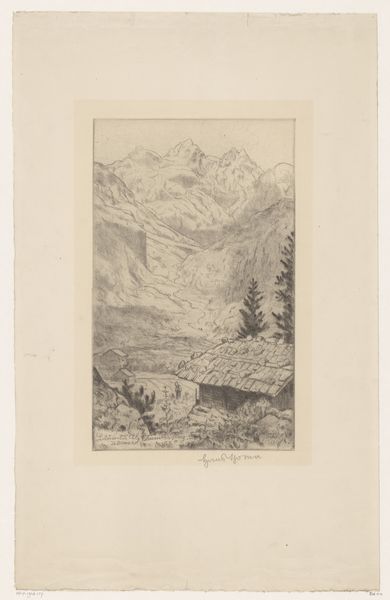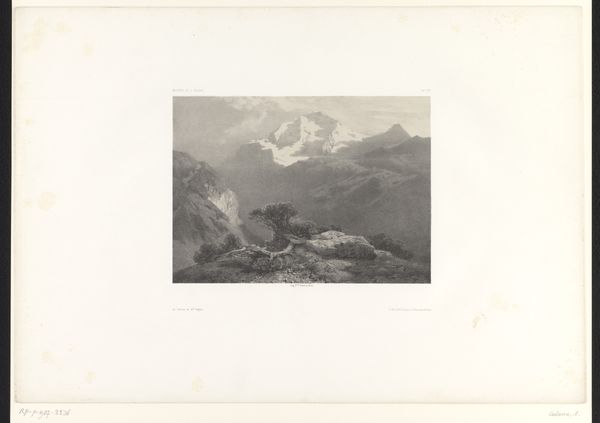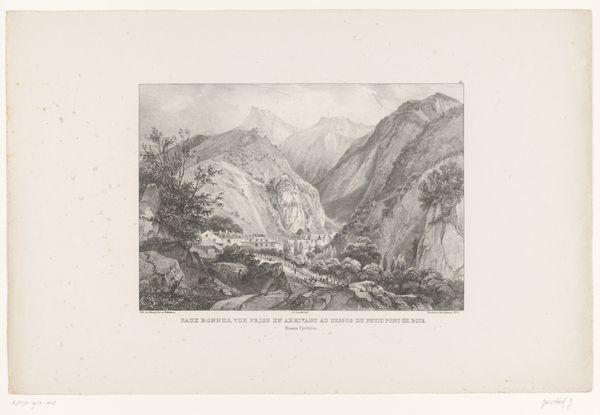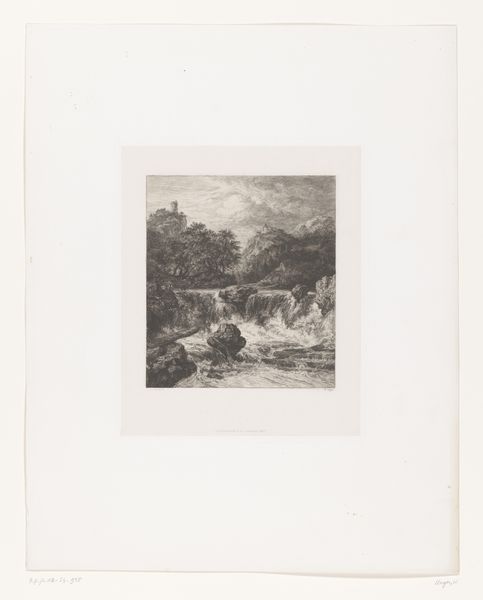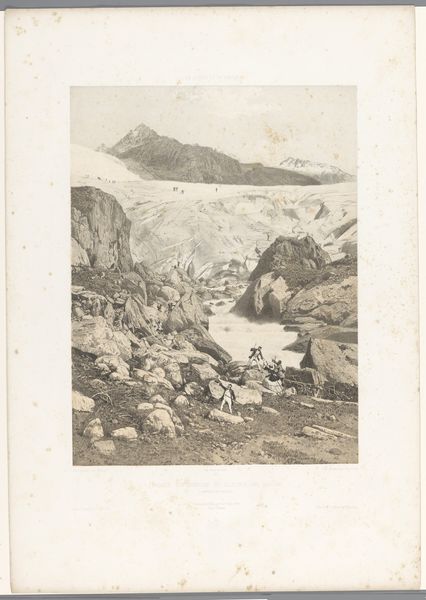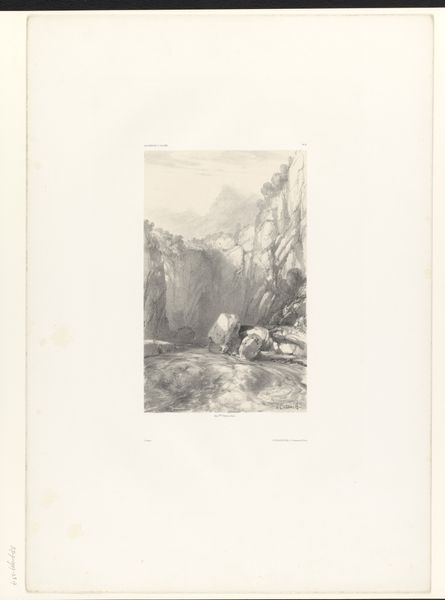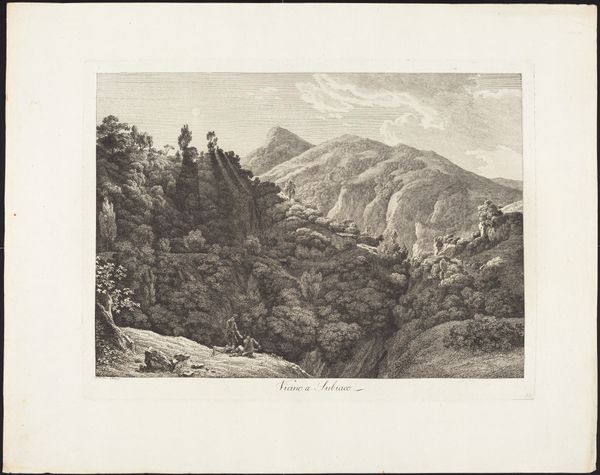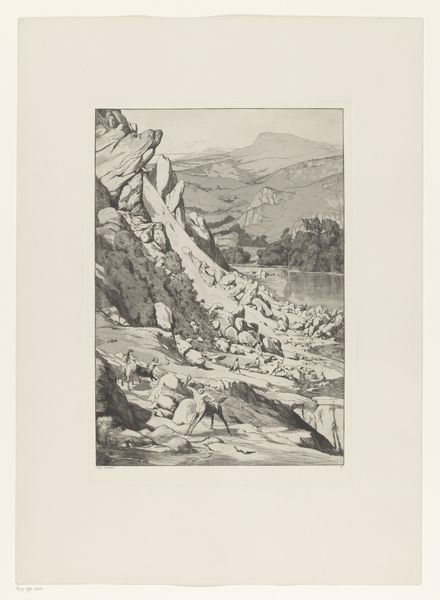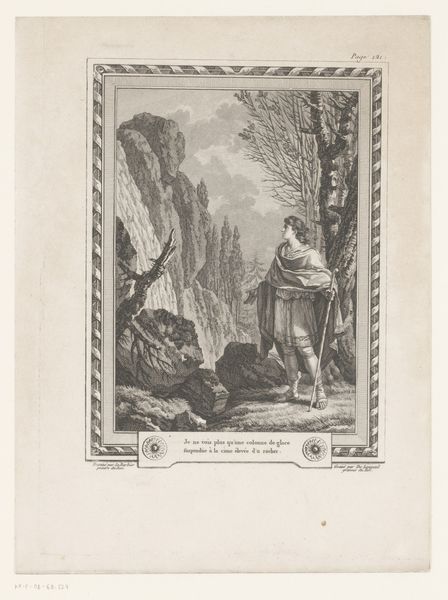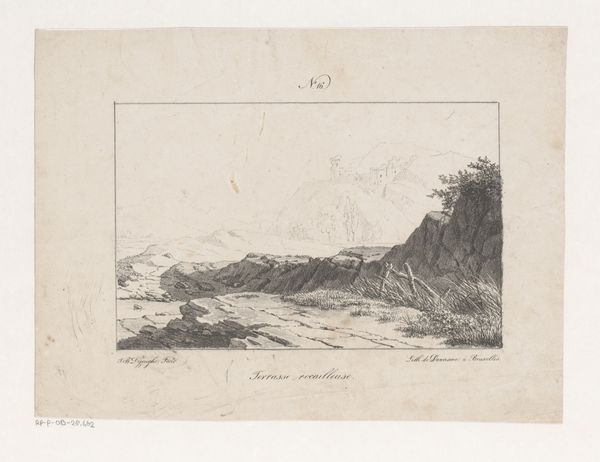
drawing, paper, pencil
#
tree
#
drawing
#
aged paper
#
pale palette
#
sketch book
#
landscape
#
paper
#
personal sketchbook
#
romanticism
#
pencil
#
ink colored
#
line
#
sketchbook drawing
#
watercolour illustration
#
storyboard and sketchbook work
#
sketchbook art
#
watercolor
#
realism
Dimensions: height 375 mm, width 290 mm
Copyright: Rijks Museum: Open Domain
Editor: Ah, two for the price of one! Two landscape sketches facing each other. A charming way to start. Curator: Indeed. Here we have "Tree by a Rock Formation and a View of a Hilly Landscape" by Max Josef Wagenbauer, dating back to 1823. Notice the distinct contrast, not only in the scenes themselves but in their depiction. Editor: You're right. The top feels intimate, almost like finding a secret world tucked away, while the lower sketch has this expansive, breathtaking quality. Like standing on top of the world. What's fascinating to me is how similar they are in tone even though the settings are so different, a melancholic stillness, what would you say? Curator: I agree. If you look at Wagenbauer’s choice of materials—primarily pencil, ink, and watercolor on paper—we observe a relatively accessible set of resources for artistic creation. Consider the role of paper-making in Bavaria at that time; paper was becoming more industrialized, thus making it easier for artists to produce these field studies. Editor: It does have that "grab and go" feel to it, a traveler's journal. The kind of artwork made to preserve a fleeting feeling... Do you think that's why the perspective on both is kind of tilted, imperfect? It almost looks as though it's from memory... a dreamscape, perhaps? Curator: The tilt lends itself well to a discussion on romanticism in 19th-century Germany. I think it certainly has to do with memory but also, in my view, reflects a romantic interest in untamed landscapes, far removed from the urbanization which took place in the first part of the century in and around Bavaria, and the effect on landscape and society that Wagenbauer likely observed. Editor: Absolutely. The way the tree in the top sketch is gnarled and reaching—it almost feels like a metaphor for that yearning, to be rooted and yet to grasp for something beyond. What a statement against industrialization that can be achieved only with watercolor and paper! Curator: Precisely. These dual landscapes become a meditation on industrial progress. Each tiny mark speaks volumes about the socio-economic realities and Wagenbauer's aesthetic decisions of his era. Editor: It’s incredible how much history is tucked into these small, pale sketches. Every look is a little window back in time. Curator: Well, indeed. And Wagenbauer's clever layering of personal and cultural meanings shows how seemingly simple sketches can tell more than one single story.
Comments
No comments
Be the first to comment and join the conversation on the ultimate creative platform.
